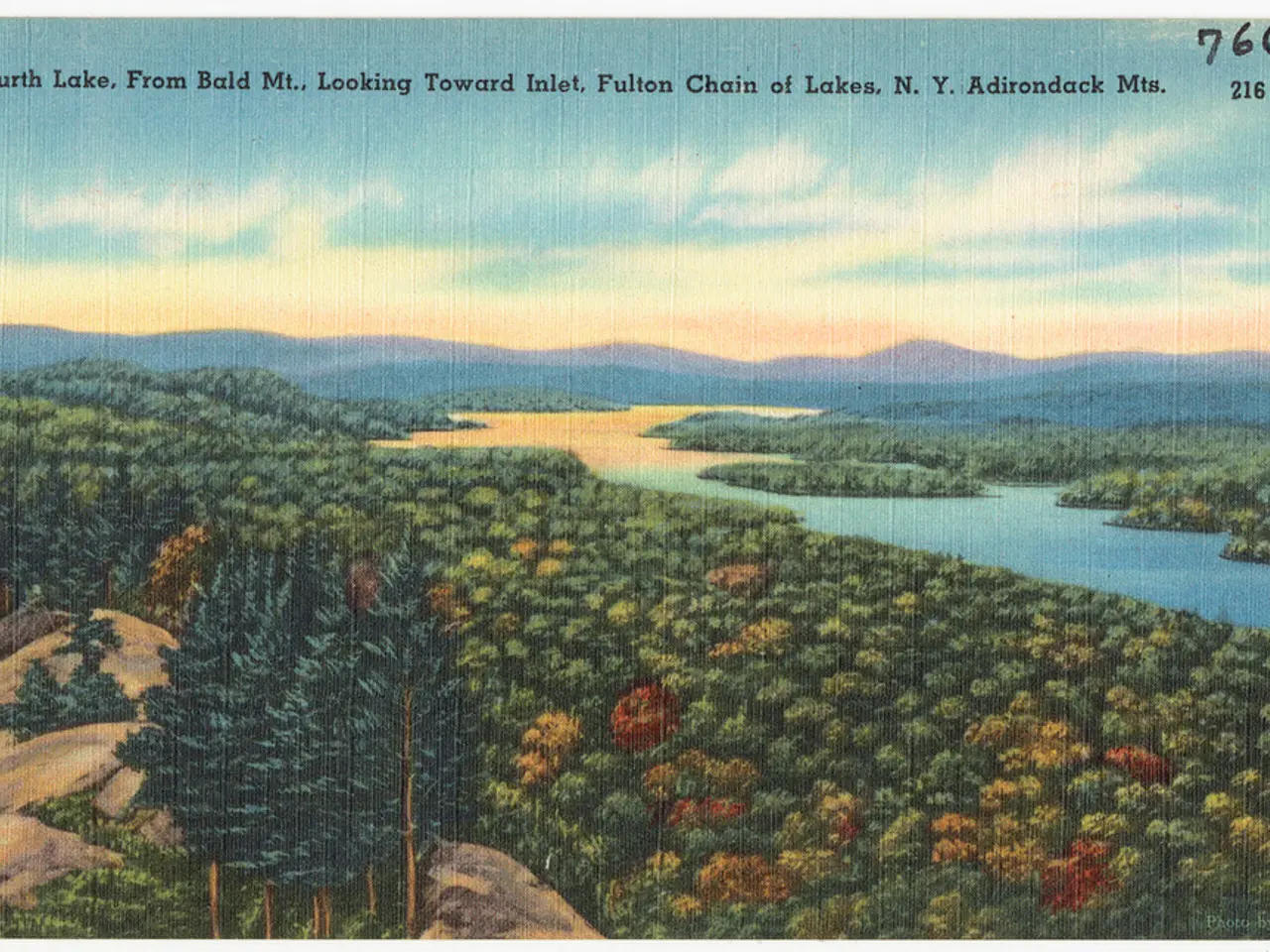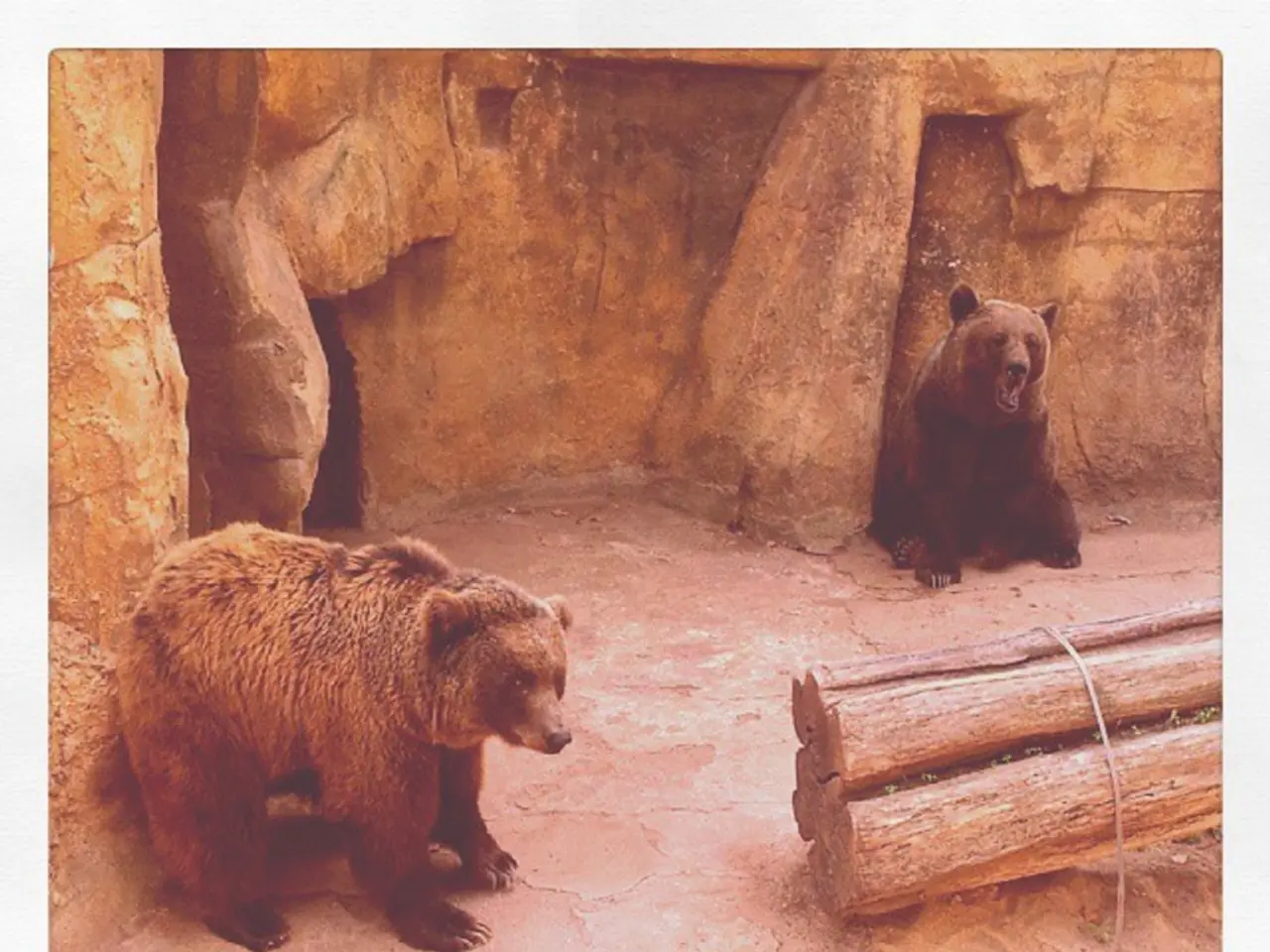Unconventional Martian landscapes, waterways, and extraterrestrial beings: five captivating, fictional portrayals of Mars that solely reside within humanity's creative mindset.
Mars, the red planet, has long been a source of fascination and speculation for humans. Over the centuries, various myths and misconceptions have arisen about the planet, from its perceived artificial canals to its depiction as a lush, habitable world teeming with vegetation.
One of the most popular and historically debunked Mars myths is the notion of Martian "canals" built by intelligent beings. This idea stemmed from the observations of Italian astronomer Giovanni Schiaparelli, who in the late 19th century discovered linear features on Mars, which he named "canali" (meaning "channels"). However, these were mistranslated into English as "canals," leading to the belief that they were artificial waterways constructed by an advanced Martian civilization. This theory was later debunked, particularly with the Mariner 4 flyby in 1965, which revealed the canals to be optical illusions.
Another famous Mars myth was popularized by Orson Welles's 1938 radio drama War of the Worlds, which convinced many that Mars aliens were invading Earth. Despite being a fictional broadcast, it contributed to a cultural mythology about Martians as hostile invaders.
Older Roman and Babylonian myths personified Mars as a war or death deity, unrelated to actual planetary science but influential in naming and early cultural views of the planet.
Contemporary science, aided by rovers such as Curiosity and Perseverance, has debunked these myths by revealing Mars as a dry, cold planet with an ancient watery past but no confirmed current life or vegetation. Although there is evidence that Mars was once habitable with liquid water and conditions potentially supportive of life, direct signs of life or artificial structures remain unconfirmed and widely rejected by the scientific community.
The Face on Mars, a rock formation resembling a human face when viewed under certain conditions, is another example of a Mars myth. This feature, around 2km (1.2 miles) long, was first imaged by the Viking 1 orbiter in 1976 and is located in the Cydonia region of Mars's northern hemisphere. However, it is nothing more than a mere trick of light and shadow, appearing as a natural rock formation when seen from other angles.
Mars gremlins, colloquial terms used to describe issues with Mars missions, have also contributed to the planet's mythical status. Half of all Mars missions have ended badly due to various issues such as launch failures, communication losses, explosions, software bugs, or crash landings.
In conclusion, while Mars has captivated the human imagination for centuries, many of the myths surrounding it have been debunked by scientific exploration. The red planet, once thought to be home to advanced civilizations and teeming with vegetation, is now known to be a dry, cold world with an ancient watery past but no confirmed life or civilizations. As we continue to explore Mars, we may uncover more about its history and potentially even signs of past life, but for now, the myths of Mars remain just that - myths.
References:
- NASA Mars Fact Sheet
- The Misconception of Canals on Mars
- The Debunking of the Martian Canals
- Evidence of Water on Mars
- Mars in Mythology
Astronomy often intertwines with pop-culture, as seen in the enduring myth of Martian "canals" built by intelligent beings, a notion debunked by modern astronomical research. Similarly, sci-fi-and-fantasy genres have left their mark on popular perception, such as Orson Welles's radio drama War of the Worlds that portrayed Mars aliens as hostile invaders.
Popular depictions in entertainment and pop-culture have also fueled the Martian mythos, with examples including the Face on Mars rock formation and the persisting belief in Mars gremlins, colloquial terms for issues with Mars missions. Despite the debunking of many Mars myths, the planet continues to captivate our collective imagination and shape our cultural narratives.







